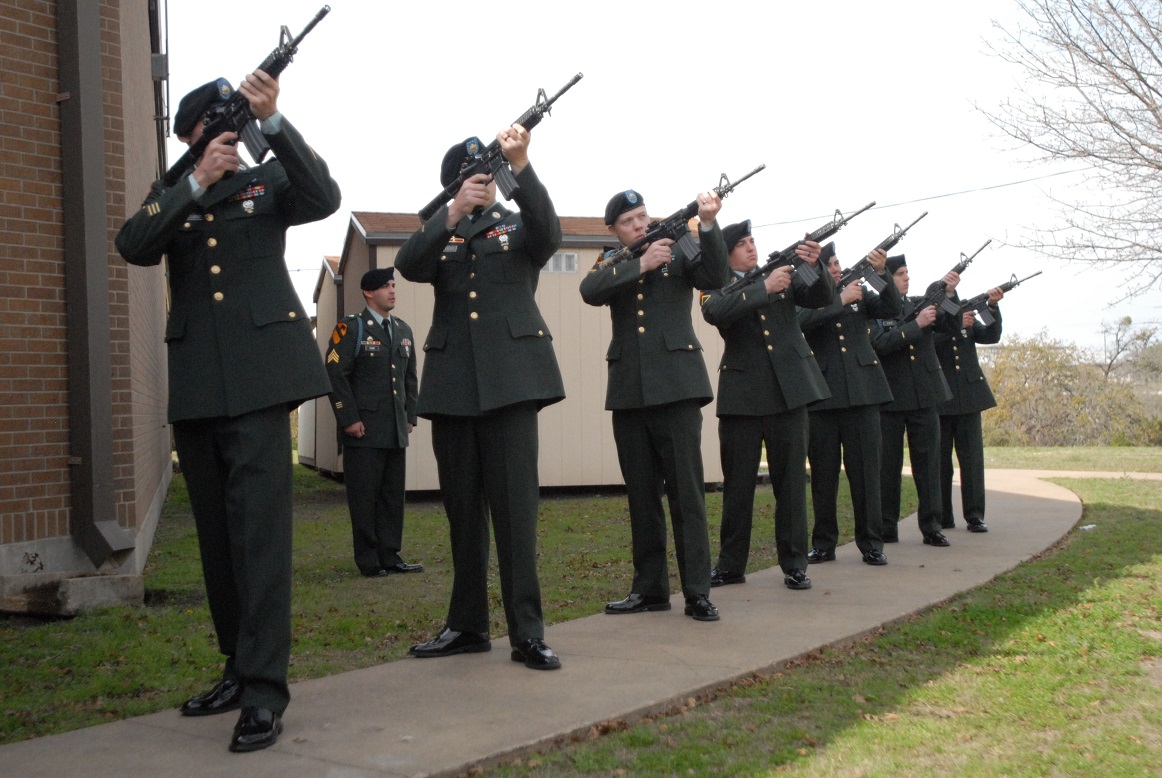by Paul Evancoe
July 11, 2020
Have you ever considered the origin and meaning behind the military’s 21-gun salute? We know it’s a formal rendering of honors performed by military personnel on behalf of the United States of America and it is always performed as a solemn show of dignity and respect. But how did it arise as such a weighty high valued tradition? The story is intriguing.
The 21-gun salute tradition can be traced back to the 14th century – about the same time period that rifles, pistols and cannons were amalgamated into warfare replacing blades and spears as the mainstay weapons of choice. In those times, firing an unsophisticated (by today’s firearms standards) black powder gun or cannon rendered them useless until they could undergo a somewhat timely reloading process. And, during the reloading process, the gunners were vulnerable. Thus, by firing one’s guns (in a safe direction) to demonstrate they were now unloaded, became a means of instilling trust, e.g., that you weren’t planning to attack the other party.
Similar actions are recorded throughout the history of warfare. For example, tribes dragging spears behind them with the point down, or the Samurai laying their Katana’s on the ground in front of them during formal meetings, were symbolic demonstrations that attacks were not planned. The purposes of these displays were to visually and symbolically demonstrate a clear lack of hostile intent.
Naval vessels were the first to adopt this tradition as a symbolic custom that quickly spread to field cannons and artillery, but the number of guns used can be credited to the Navy. In the day of “wooden ships and iron men,” most ships had seven guns per side and this number eventually became the standard for the number of guns used in the salute, regardless of whether the guns were sea or land based.
Originally the guns were only fired once to empty them, signifying an absence of hostility and therefore, it was then a seven-gun (or seven-shot) salute. Over time with the invention of metallic (brass) cased ammunition, guns became quickly reloadable and adaptions were made to the salute based on the importance of the person or nation, being saluted. Eventually, the number was internationally set to 21 shots.
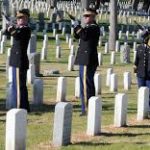
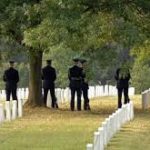

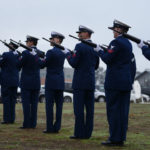

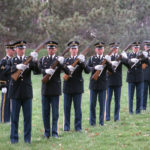






Today, the tradition is used to recognize the sovereignty of a foreign nation, their chief of state, or a visiting member of a reigning royal family. It’s also used to honor national flags as well as the president, the president-elect of the United States, or a former president. The salute is also given on the day of the funeral of a president and is always performed at high noon.
A 21-gun salute may also be given to senior military and civilian leaders both of the United States and other nations, but in those cases the number may be less than 21. The number given to these leaders varies, based on their rank or title, but it’s always an odd number.
The 21-gun salute is not performed at funerals. The salute performed at a military funeral is called a “three-volley salute” or “three-rifle volley.” It is intended as a show of respect and remembrance and it is regularly performed at locations such as Arlington National Cemetery and at other military funerals.
The three-volley salute is always performed by an odd-number of honor guard – composed of three to seven service members – in full dress uniform. Upon command, they raise their rifles to their shoulders and fire three successive volleys. The weapons are loaded with blanks and fired in a manner so the muzzles are over the casket. If mourners are present, the honor guard stands a safe distance away and fires in a safe direction away from the bystanders.
The purpose of the modern 21-gun salute is meant to be an acknowledgement of respect and dignity. While modern firearms fire more quickly than earlier-era weapons, the honor comes from upholding the tradition and rendering the recipient with a time-honored sign of respect (and trust).
Given that times have changed and we’re no longer placing ourselves at the mercy of the other party by unloading our weapons by firing them off, the gesture is now purely symbolic. Nonetheless, that symbolism has the same meaning. By doing so, we place ourselves in symbolic supplication, which is, in itself, a sign of respect and acknowledgement of one’s dignity.
While many traditions have fallen out of favor in today’s fast-paced politically correct environment where history is rewritten on a daily basis, thankfully, the 21-gun salute endures. The very tenets of today’s professional military are founded upon symbolism, respect and dignity. We must cherish that datum and let it be evermore.
Editor’s Note:
We are proud to include Paul Evancoe as one of our team. He brings a wealth of cred to this endeavor. The following is a short (…ahem) bio.
Paul R. Evancoe
Paul is a retired, career Navy SEAL. Following his 25 year military career, he continued government service as the Associate Deputy Assistant Secretary of State for Special Operations in the Office of the Coordinator for Counterterrorism at the U.S. Department of State. He next took a position with the National Nuclear Security Administration where he later headed the Office of Emergency Response, which has responsibility for worldwide nuclear and radiological accident and terrorism incident response. After 38 total years of government service he became the Vice President for Military Operations at FNH USA, the largest military and sporting arms company in the world. He left FNH to become the president of Aegis Industries, doing research and development in Human Electro-Muscular Incapacitation and cancer research using apoptosis. He returned to government service in 2010 to head DHS’s Explosives Division Inter-agency Technical Liaison Program in support of the DHS Science and Technology Directorate. Paul has been working as an executive consultant since 2013 in support of the intelligence and counterterrorism communities. Paul currently holds the position of Executive Vice President for Business Operations with SIS.
Paul is the published author of three novels; Own the Night, Violent Peace and Poison Promise (available from Amazonbooks.com). Paul also regularly authors feature articles dealing with geo-political events, counterterrorism, and weapons technology published in various journals and magazines.
Paul holds a BS in Industrial Technology from Millersville Pennsylvania State University and an MA in Human Resource Development from the George Washington University. He additionally holds proven sub-specialties in Political Military Strategic Planning and Weapon Systems Engineering from the US Naval Post Graduate School – Monterey, CA. His significant military service awards include the Joint Meritorious Service Medal, Bronze Star with “V” for valor, Purple Heart, Meritorious Service Medal (3 awards), Cross of Gallantry with gold star for heroism, Navy Commendation Medal with “V” for valor, Navy Combat Action Ribbon (3 awards), Navy Achievement Medal (4 awards), along with 12 other lesser medals and campaign ribbons.
